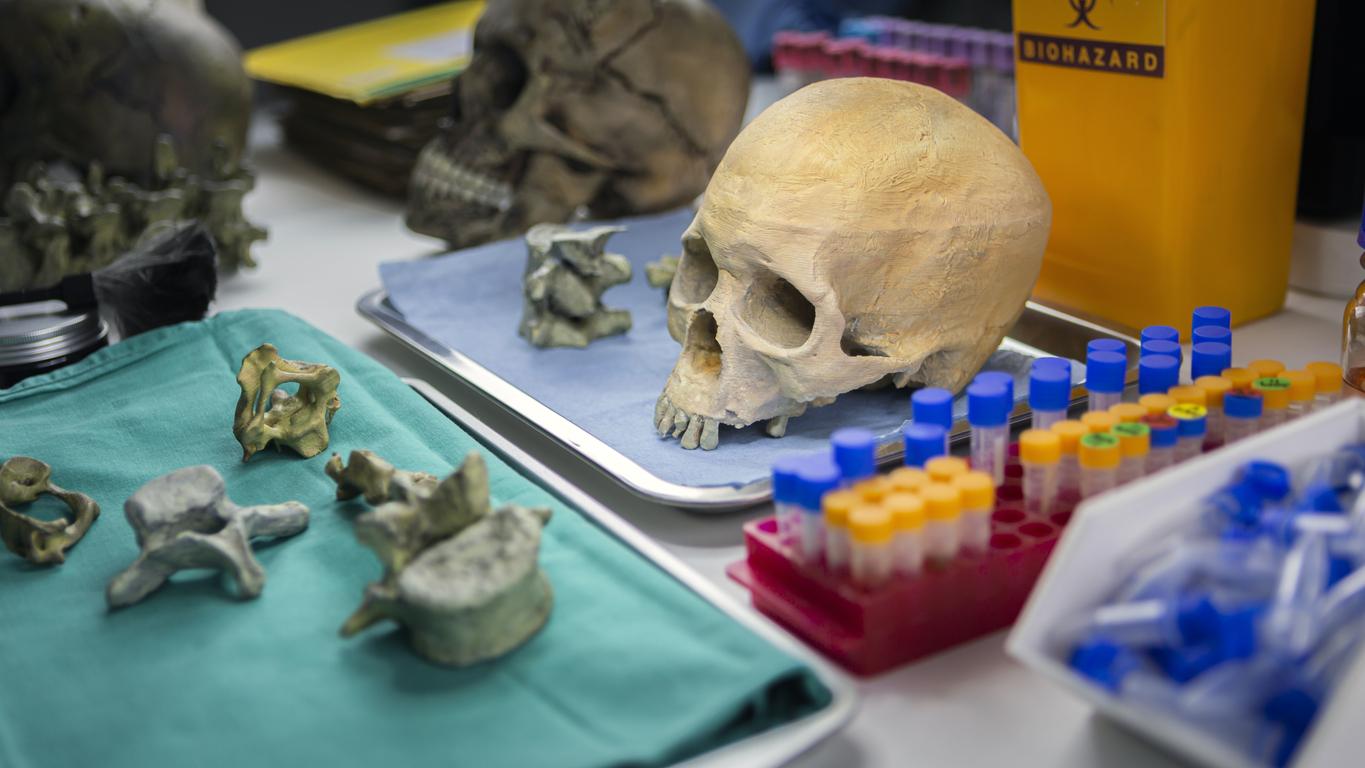At 29, Sabine began to feel tingling in the fingers of her left hand, then throughout her arm, accompanied by a dull pain in her shoulder. MRIs (medical resonance imaging) of the spinal cord and brain revealed patches of inflammation. The diagnosis of multiple sclerosis (MS) followed. In France, 100,000 people are affected by this neurological disease. In 85% of cases, it develops in flare-ups (relapsing-remitting form), with recovery periods. Otherwise, it progresses continuously.
weakened nerve fibers
In this chronic inflammatory disease which mainly affects young women (three women for one man), the immune system destroys the myelin sheath, which protects nerve fibers and promotes rapid transmission of information between the brain and the body. “The patients suffer from great fatigue, motor, visual, cognitive disorders…” , explains Dr. Sophie Pittion-Vouyovitch. If we do not yet know how to cure MS, the therapeutic arsenal has been enriched with new molecules to prevent relapses and delay the onset of disabilities. “The more alternatives we have, the more we find a treatment adapted to the patient according to his age, his lifestyle and of course, according to the evolution of his disease”, continues the neurologist.
Easier-to-take immune-modulating drugs
To treat symptoms during flare-ups, doctors prescribe high-dose corticosteroids. There are also long-term treatments, immunomodulators and immunosuppressants, which modify and reduce the response of immune cells, thus slowing down the destruction of myelin. Interferon beta (Avonex, Plegridy, Rebif, Extavia Betaferon) or parent glatira acetate (Copaxone) target inflammation.
-
In stitches at home : depending on the molecules used, this treatment is injected subcutaneously or intramuscularly, every two days to twice a month. But some cause flu-like symptoms.
The surveillance : blood should be taken regularly to monitor blood cells, platelets and liver enzymes. -
In tablets: Tecfidera, two capsules per day, or Aubagio (teriflunomide), one tablet per day. Although this method of administration has simplified the lives of patients, it is sometimes accompanied by undesirable effects.
The surveillance : quarterly blood work to monitor white blood cells and transaminases, due to possible liver toxicity.
A new therapeutic protocol for progressive forms
If the person has had new outbreaks or if lesions have appeared on the MRI despite the treatment, other effective molecules on the most active forms of the disease exist, with different modes of admission.
- Gilenya (fingolimod), only 1 tablet per day, is effective. Tolerance is good, but adverse effects are possible (risk of infection, liver toxicity, visual disturbances). It is contraindicated in people with severe heart rhythm disorders. An electrocardiogram (ECG) and measurement of blood pressure are required before the administration of the first dose, and cardiac monitoring for six hours afterwards.
- Tysabri (natalizumab) and Lemtrada (alemtuzumab) are both effective on the active forms as well. Lemtrada is enough little prescribed because expensive and not reimbursed. The Tysabri can be fully covered as part of the “list in addition”*.
- Ocrevus (ocrelizumab), it is the new treatment which arrives. This drug is injected intravenously, under hospital supervision.
“The first two infusions are given fifteen days apart. They are followed by an infusion every six months. explains the neurologist. A study has shown that this drug significantly limits the progression of disability in patients, with a 24% reduction in the risk of it worsening.
Hope for the coming years
If this is not enough, Elsep (mitoxantrone), a powerful intravenous immunosuppressant, can be prescribed in certain cases, at the rate of one infusion per month in the hospital. A treatment which is however limited to six months because it increases the risk of leukemia. Within two years, an alternative should emerge: Siponimod, an oral tablet to be taken daily, but Dr. Sophie Pittion-Vouyovitch remains cautious. Siponimod has not yet obtained marketing authorization, so it is not known whether it will be marketed in France. Other interesting avenues of research could also lead.
- Evobrutinib, for example, a molecule indicated in the active forms of the disease, has shown a reduction in lesions in phase 2 of clinical trials. But “A larger study is needed to demonstrate its effectiveness as well as the absence of serious adverse effects”, however, specifies the neurologist.
- Another hope, the MD1003 (high dose vitamin B8) may slow the progression of multiple sclerosis. It is also being evaluated.
* Financial coverage of the treatment by Health Insurance in addition to hospitalization rates when these indications are of an innovative nature (Consult the list of all eligible treatments)
Our expert: Dr Sophie Pittion-Vouyovitch, neurologist at Nancy University Hospital
Websites to be accompanied

















